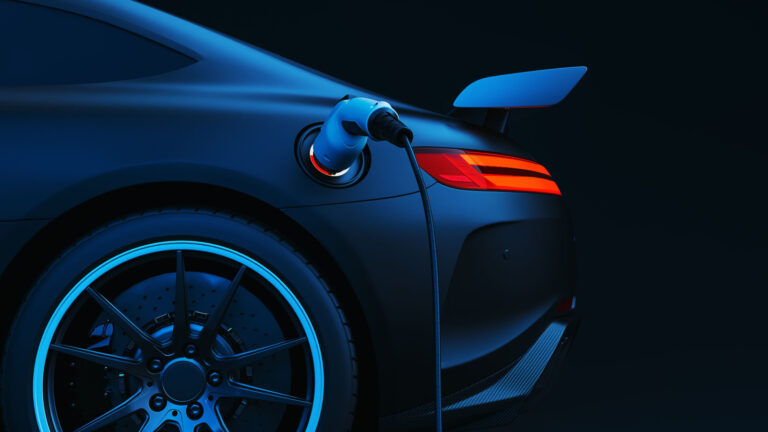When President Joe Biden took control of the White House in 2021, he promised to change America’s automotive industry forever.
Those promises are now becoming a reality through a flurry of new regulations introduced over the past few months.
Together, these regulations promise to reshape not just the U.S. automotive industry but, specifically, the electric vehicle (EV) industry as well.
In fact, given these new requirements, companies you thought were going to win the EV Race may not win after all. And companies that didn’t stand a chance a few years ago could now become the new titans of the EV industry.
It will be a giant reshuffling of the deck in the EV world. Is your portfolio prepared?
Let’s take a look.
The New Electric Vehicle Tax Credits
Two major pieces of pending legislation have the potential to reshape America’s auto industry over the next 10 years.
The first has to do with EV tax credits. The second has to do with EPA tailpipe regulations.
Let’s talk about the tax credits first.
For years, the U.S. government has incentivized the purchase of electric vehicles via tax credits. These credits were rather broad and applied to a wide-range of vehicles. The government simply wanted people to buy EVs. It didn’t care much about who was building the EVs or where their critical materials were coming from.
Now, though, the government does care about that stuff, primarily because it can. (EV sales now account for 10% of total auto sales, so the industry is growing quickly.) Plus, now it matters. (if the U.S. converts entirely to EVs but all those EVs are built in China, then the U.S. economy will be entirely reliant on China – not good.)
Consequently, over the past few months, the U.S. Treasury Department has been working tirelessly to redefine the nature of EV tax credits to incorporate the origin of EV materials into the calculation.
And this week, it finalized and posted its decisions..
The full $7,500 federal EV tax credit will be broken into two parts:
- A $3,750 tax credit for EVs that build battery components in the U.S.
- Another $3,750 tax credit for EVs whose battery-critical minerals are extracted or processed in the U.S. or any country with which the U.S. has a free trade agreement.
In short, the U.S. Treasury Department is ensuring that only fully “made-in-America” EVs get the full tax credit. Everything from battery mineral extraction to EV assembly must be done in the U.S. or an allied nation in order for that EV to get the full $7,500 tax break.
And a lot of EVs don’t meet those standards.
For example, Rivian’s (RIVN) signature pick-up truck, the R1T, and its signature eSUV, the R1S, don’t qualify for the tax credit under these laws.
BMW’s (BMWYY) electric cars don’t make the cut. Nor do Audi’s electric cars, the very popular Volkswagen (VWAGY) ID.4, or the
Volvo (VLVLY) S60.
Even Tesla’s (TSLA) most popular vehicle – the standard range Model 3 – only qualifies for half the tax credit.
In other words, previously, pretty much every firm making an EV could count on a $7,500 tax credit. But now only fully “made-in-America” EVs get the full $7,500 – and that’s a rather small portion of the EV industry today.
The investment implication? It may be time to back-up the truck on “made-in-America” EV stocks.
The New EPA Regulations
The new federal tax credits are a big change. Arguably, though, they will impact the EV industry less in the long-term than the EPA’s proposed new regulations.
These regulations – announced last Wednesday in Detroit – target tailpipe emissions. Specifically, they put a new mandate on fleet-wide emissions of various greenhouse gasses.
And of, course, the biggest piece of these developments is a new carbon dioxide emission mandate.
The EPA is mandating that all fleets reduce carbon emissions to 82 grams per mile by 2032, which is about 75% lower than the 347 grams per mile of CO2 emissions that fleets averaged in 2021.
The regulations also call for fleet emissions of NOx, VOCs, SOx, etc, to drop by about 50% over the next 10 years.
And they apply to both passenger cars and medium- and heavy-duty vehicles, like trucks, buses, vans, and more.
The EPA believes these regulations will meaningfully accelerate the adoption of EVs in the U.S.
The government was previously targeting ~50% EV adoption by the early 2030s. The EPA believes these new regulations put us on a path to ~60% EV adoption by then.
In other words, this new legislation could inject steroids into the EV Race. The already extremely-fast adoption of electric vehicles in the U.S. will become even faster, creating EV stock winners – and losers – faster than ever before, too.
The Final Word on the Shifting Electric Vehicle Industry
Big changes are coming to the EV industry.
Made-in-America EVs will have a huge advantage over other EVs going forward.
EV adoption is likely to accelerate in the coming years.
Synthesizing those two developments, it becomes pretty clear that the current titans of the EV industry may not remain titans for long. New titans primed to capitalize on these seismic shifts will emerge.
And we think we’ve found one tiny tech stock that could emerge as a new titan in the EV Race.
This stock is completely off-the-radar for most analysts and investors. Yet, the company is headed by a genius group of engineers who have collectively built what may end up being the most transformational piece of automotive technology the industry has ever seen.
The best part? This new flurry of electric vehicle legislation could be the exact catalyst this stock needs to skyrocket higher.
Learn more about that exciting stock – before it’s too late.
On the date of publication, Luke Lango did not have (either directly or indirectly) any positions in the securities mentioned in this article.


